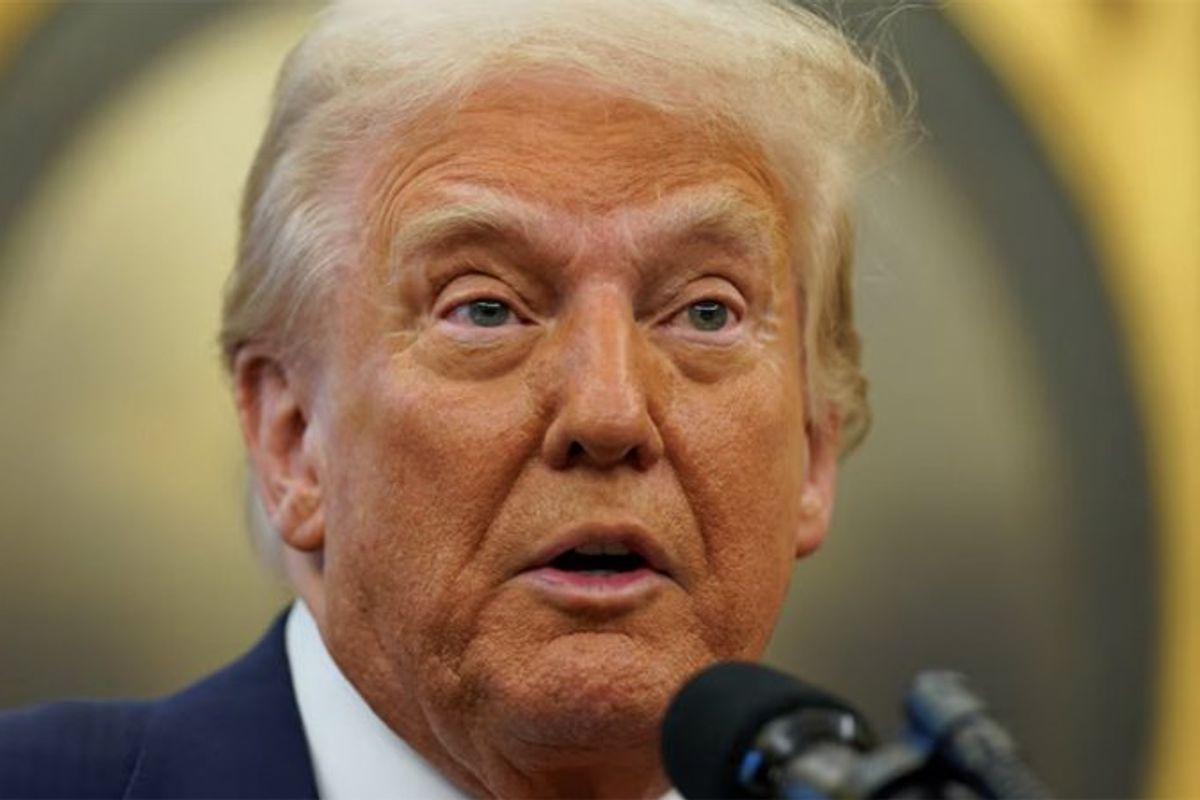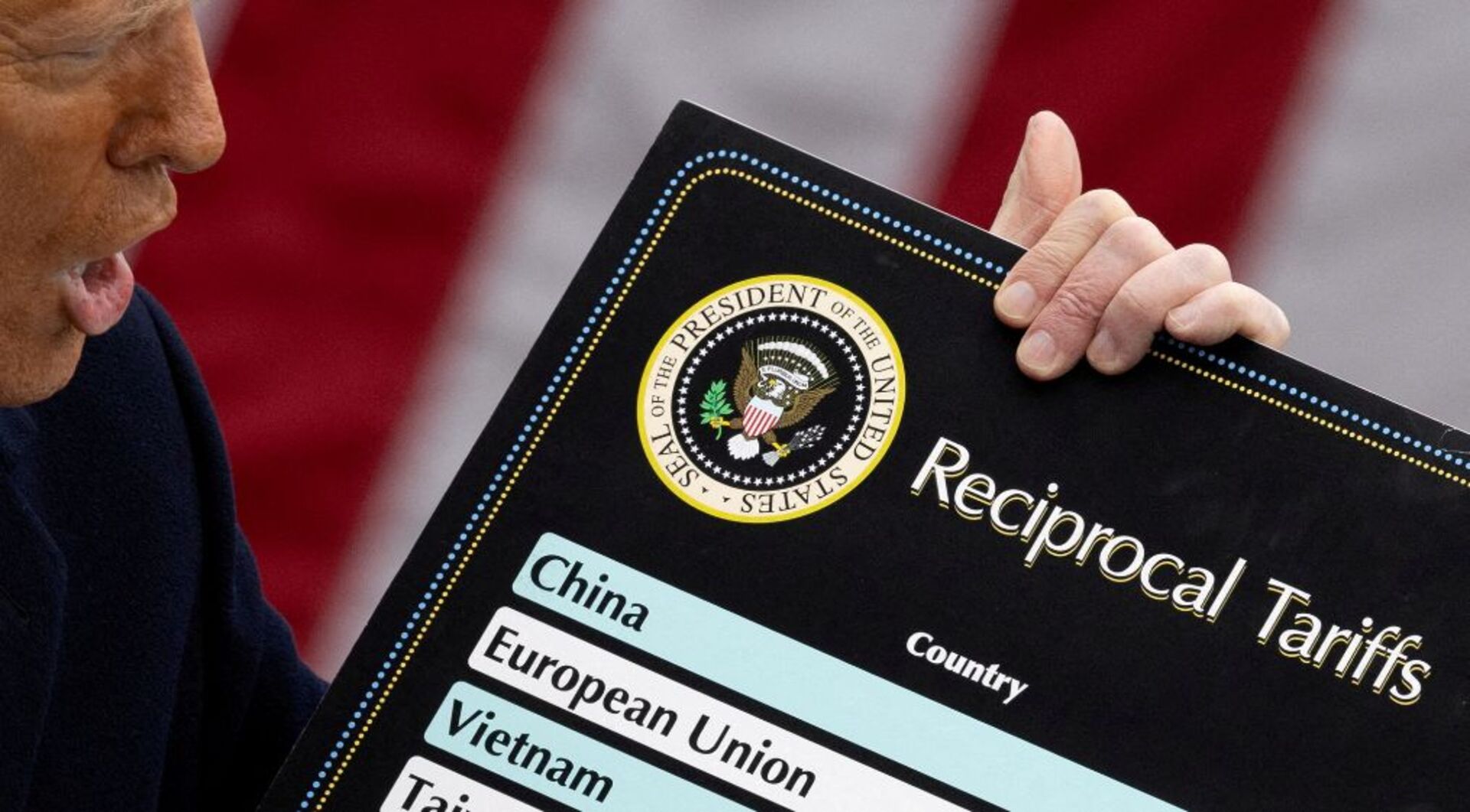By Joshua B. Freedman (FPRI) -- Three months on, the aftershocks of Donald Trump’s “Liberation Day” tariff spree in April 2025 continue to...
Vous n'êtes pas connecté
Rubriques :
 - EURASIAREVIEW.COM - A la une - 17/Jul 00:21
- EURASIAREVIEW.COM - A la une - 17/Jul 00:21
The Impacts Of Trump’s Tariffs On Taiwan – Analysis
By Joshua B. Freedman (FPRI) -- Three months on, the aftershocks of Donald Trump’s “Liberation Day” tariff spree in April 2025 continue to reverberate across East Asia. The United States imposed high tariff rates across the region, including 32 percent on goods from Taiwan, before backtracking and granting a partial 90-day reprieve for all countries except China. That window of reprieve is now closing; Taiwan and its neighbors face another episode of economic upheaval if the United States once again increases tariffs. No matter if—or how—individual trade agreements get resolved, the impacts of the tariff-induced geoeconomic reordering are already being felt in Taiwan. In the short term, despite its extensive bilateral economic ties to the United States, Taiwan is relatively well positioned to withstand much of the pain that tariffs might bring to its export sector. Many of Taiwan’s leading industries can overcome tariffs due to a lack of viable competitors. Yet tariffs have already exacerbated the long-term challenges that Taiwan faces—not only economically, but also in terms of security and geopolitics. The threat of tariffs has accelerated underlying trends that could destabilize Taiwan’s position in the region. Tariffs are further pushing companies to diversify their supply chains, which has increased competitive pressure from production hubs in lower-cost areas. Tariffs have also sped up efforts for mainland China to decouple from the United States, which will weaken the ability of the United States to use its economic leverage to deter conflict in the Taiwan Strait. And aggressive tariffs on Taiwan have soured Taiwanese public attitudes toward the United States, further complicating the domestic political challenge of balancing the dual superpowers of the United States and China. The forces driving these developments predate Trump’s trade escalation; tariffs, however, have turbocharged them in ways that increase the challenges facing Taiwan. Regardless of whether tariff rates are further maintained at 10 percent, are negotiated down to a lower rate, or jump back up to the 32 percent threatened in April, the effects of the tariffs have already accelerated major changes that will shape Taiwan in the long term. Economic Impacts: Taiwan’s Comparative Advantage Amid Sectoral Decline Tariffs on Taiwanese goods will have a mixed impact on Taiwan’s economy. Despite its heavy reliance on exports to the United States, Taiwan’s economy is relatively well protected from some of the biggest trade shocks in the short term. Many of Taiwan’s world-leading industries, most notably advanced semiconductors, enjoy unrivaled preeminence or occupy an economic niche that faces limited competition. In some cases, Taiwan will benefit from Trump’s across-the-board tariffs: even more onerous tariffs on regional competitors—especially mainland China—provide Taiwan with a greater comparative advantage. If the United States places high rates on other export-oriented economies, the tariffs will not have a major immediate impact on Taiwan’s competitiveness. Yet Taiwan is not fully insulated in the long term: the economic impact of tariffs varies by sector, and tariffs are accelerating regional changes that are intensifying pressure on lower-margin industries. Taiwanese exports have been shifting away from mainland China and toward the United States. While mainland China was Taiwan’s top export destination for much of the 2000s and 2010s, the United States has been the top market for Taiwanese goods since the beginning of 2024. Unsurprisingly, Taiwan is the largest semiconductor exporter to the United States: according to US Customs Data, Taiwan was responsible for 28 percent of the electronic integrated circuits imported into the United States in 2024. Taiwan’s exports to the United States are not limited to semiconductors, however. Taiwan is also the leading source of US imports of fasteners—screws, bolts, and other small metal items—and office machine parts. Taiwan’s unique role in producing the world’s most advanced semiconductor chips insulates it from much of the shock of tariffs. Demand for chips is insatiable as more of the global economy relies on advanced computing. Taiwan’s advantage in the industry is well established: economists studying global trade and finance note that no other country is able to overtake Taiwan in the production of advanced chips in the foreseeable future, cushioning it from higher costs that tariffs might cause. Beyond semiconductors, Taiwan’s success in producing a range of niche, hard-to-replicate products also provides a comparative advantage, as few competitors exist to undercut Taiwanese businesses. For other export sectors, though, Taiwan is vulnerable to tariff shocks. As US-China relations have deteriorated in the past decade, companies seeking to reduce political risk have shifted production away from China to a range of lower-cost locations. The sudden imposition, withdrawal, and escalation of US tariffs around the globe are accelerating the efforts of companies to diversify their supply chains. While some of this pressure redirects more business away from mainland China to Taiwan, which benefits Taiwan’s economy, the primary shift is toward lower-cost and lower-risk destinations such as Southeast Asia. As production expands and develops in these regions, their ability to outcompete Taiwan grows. Taiwan’s fastener industry is at the forefront of these shifts. Ask anyone in Taiwan about the impact of tariffs on local businesses, and they are likely to bring up the struggles of screw and bolt manufacturers—especially small and medium-size enterprises that operate on relatively low margins. Taiwan developed a successful fastener industry built around industrial clusters across the island, but Taiwan’s dominance in the industry has been diminishing. Vietnam, Thailand, and India now all produce fasteners at a lower cost than Taiwan. While competition is currently limited to low-end fasteners, tariff pressures are speeding up the pace at which a broader swath of production will shift away from Taiwan. Companies have been moving more of their overall manufacturing capacity to Southeast Asia, Mexico, and other lower-cost destinations, which is accelerating these countries’ capacity to outcompete Taiwan in a greater range of product lines. One analysis in late 2024 quoted sources saying that more than 10 fastener companies in Taiwan were closing every month; after tariffs, manufacturers claim they are losing money or seeing their orders plummet. Since the imposition of tariffs, the Taiwanese dollar (NTD) has also sharply appreciated against the US dollar, further hurting fastener exports. Even if Taiwan can broker an advantageous trade deal with Trump, the uncertainty of the new US policy approach has already encouraged companies to double down on relocation efforts that will impact lower-margin Taiwanese industries. Semiconductors and advanced machines will weather tariffs in the near term, but other sectors—which are still a significant portion of Taiwan’s economy—are facing long-term crises. Security Implications: Faster US-China Decoupling, Fewer Deterrents Extremely high tariffs on trade between the United States and China also carry long-term security risks for Taiwan. Even after negotiating a deal to de-escalate a tit-for-tat trade war that pushed tariffs north of 100 percent, US tariffs on Chinese exports remain at 55 percent as of June 2025. These rates—nearly unthinkable just a few months ago—have sped up efforts to decouple the United States and Chinese economies more fully. By further accelerating decoupling, tariffs limit one of the main tools through which the United States can influence Beijing and prevent conflict in the Taiwan Strait. As...
Articles similaires
What is the state of play with Trump's tariffs?
With sweeping tariffs on friend and foe, US President Donald Trump has roiled financial markets and sparked a surge in economic uncertainty -- and...
What is the state of play with Trump's tariffs?
With sweeping tariffs on friend and foe, US President Donald Trump has roiled financial markets and sparked a surge in economic uncertainty -- and...
US import tariffs could cut growth
South Africa’s economy is likely to take a knock if the 30% import tariff on local goods announced by United States President Donald Trump this week...
US import tariffs could cut growth
South Africa’s economy is likely to take a knock if the 30% import tariff on local goods announced by United States President Donald Trump this week...
Trade worry: Sri Lankan exporters flag 30% proposed US tariff; Apparel, rubber sectors may take hit
Sri Lankan exporters are concerned about a potential 30 percent tariff on goods entering the United States. The Exporters Association of Sri Lanka...
Trump’s Tariffs Threats Against The Global South, ASEAN And The Philippines – OpEd
With its misguided tariff wars, the Trump administration is undermining global economic prospects and waging war against development in the Global...
'Glaring error': Trump's angry tariff letter cites 'imaginary trade deficit'
President Donald Trump's angry letter to Brazil chastizing its judiciary and informing the country of his plans to slap a massive tariff on its goods...
What are the risks from Trump’s latest tariff threats? | TV Shows
US president has told Mexico and EU they face tariffs of 30 percent in August. United States President Donald Trump has informed Mexico and the...
US-China Tariff Actions Since 2018 – Analysis
By Karen M. Sutter Since 2018, the U.S. government has imposed a series of tariffs on imports from the People's Republic of China (PRC, or China)...
Les derniers communiqués
-
Meta to invest hundreds of billions in superintelligence efforts
Meta - 16/07/2025
-
NASA discovers 'super Earth' planet emitting mysterious signal
National Aeronautics and Space Administration - 16/07/2025
-
Amazon Prime Day 2025 Delivers Record Sales and Savings in Expanded Four-Day Shopping Event
AMAZON - 12/07/2025
-
DHS Reveals Criminal Histories of Illegal Aliens Detained at Prairieland Detention Center at Time of July 4 Attack
The Department of homeland security - 11/07/2025
-
Henson Group and myCloudDoor Merge to Form ALIANDO, a Leading, Global Microsoft Partner
Henson Group - 10/07/2025
-
Their ability to enter and operate in the United States emphasized the danger of letting violent offenders exploit our border—and reinforces why the Trump Administration refuses to let its guard down. HSI Omaha led the operation with support from federal and international law enforcement partners. ICE currently holds both individuals in custody. The agency has initiated removal proceedings and will continue coordinating with El Salvadoran authorities to send them back to face justice.
The Department of homeland security - 10/07/2025
-
Their ability to enter and operate in the United States emphasized the danger of letting violent offenders exploit our border—and reinforces why the Trump Administration refuses to let its guard down. HSI Omaha led the operation with support from federal and international law enforcement partners. ICE currently holds both individuals in custody. The agency has initiated removal proceedings and will continue coordinating with El Salvadoran authorities to send them back to face justice.
The Department of homeland security - 10/07/2025
-
ICE Takes Down High-ranking MS-13 Gang Leaders Wanted for Murder
The Department of homeland security - 10/07/2025
-
Buy with Prime Expands with New Brand Dr. Berg Nutritionals
AMAZON - 09/07/2025
-
DHS Sends Administrative Subpoenas to Harvard University
The Department of homeland security - 09/07/2025



